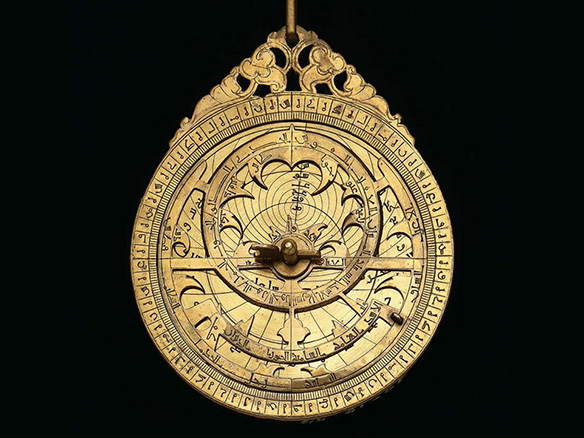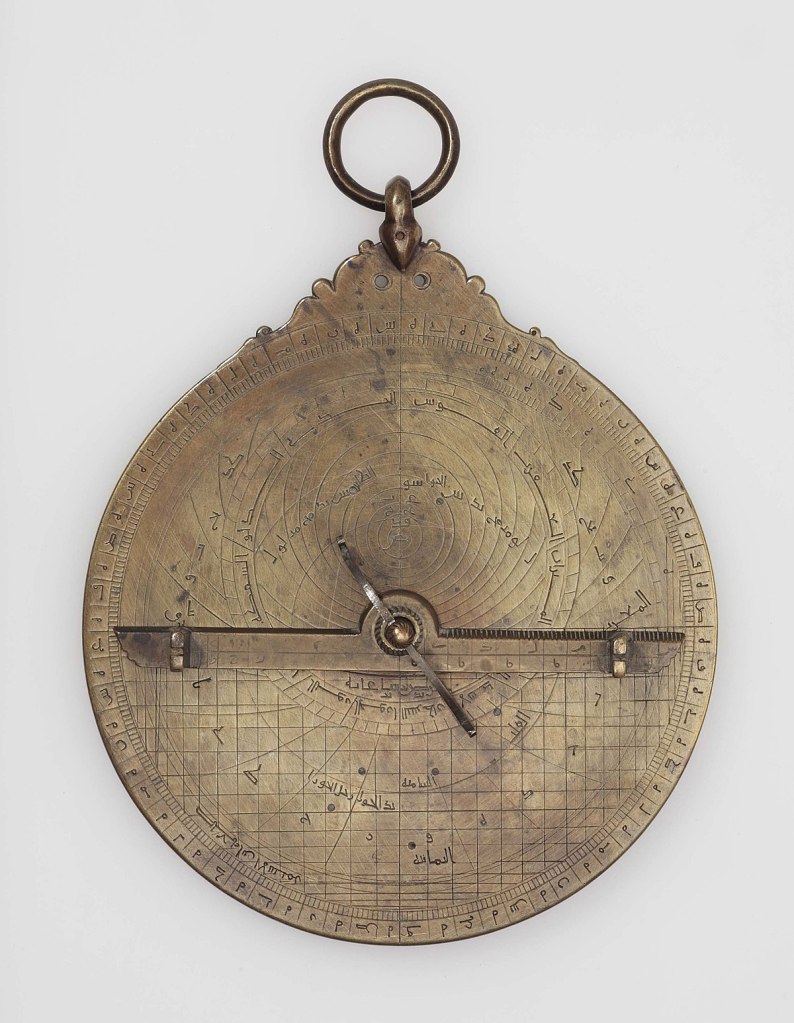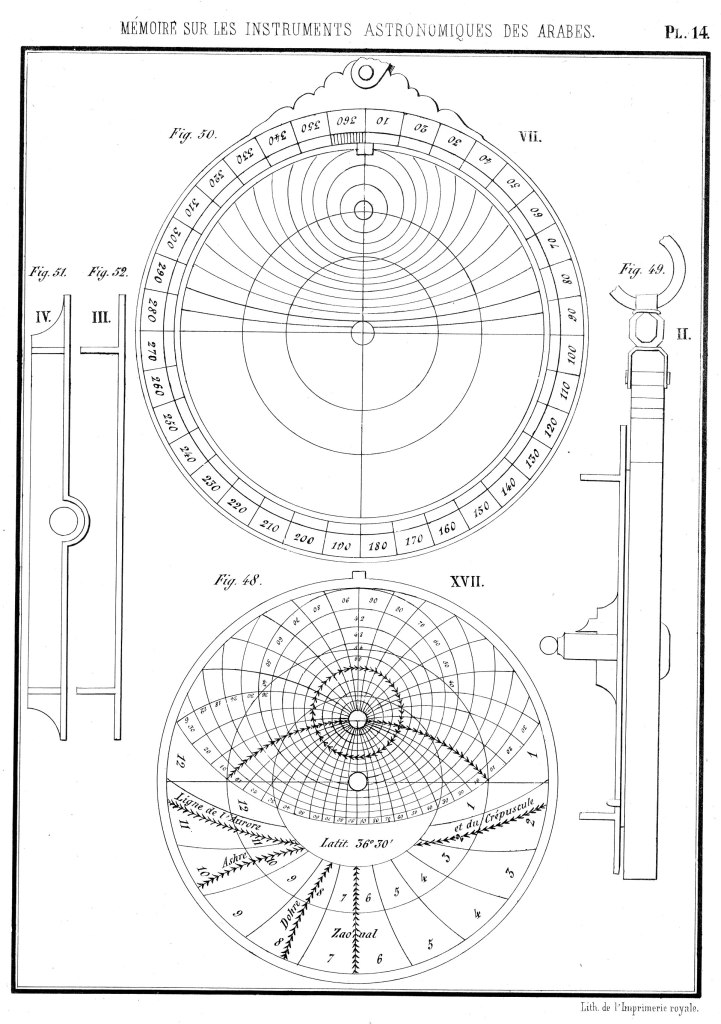In a recent excellent video on Hypatia – Myths and History, Tim O’Neill correctly pointed out that the claim that Hypatia created the astrolabe was rubbish, going on to claim that it had existed for at least five centuries before she lived. Tim’s second claim is in fact wrong but is just one of many commons claims about the ancient origins of the astrolabe. I have decided to give a brief sketch of what we actually know about the origins of this multipurpose astronomical instrument.

In 694 ah (1294–95 ce), Mahmud ibn Shawka al-Baghdadi produced this astrolabe.
It would surprise most people to discover that the earliest known treatise on the astrolabe was written by Theon of Alexandria (c. 335–c. 405 CE), Hypatia’s father. This work is no longer extant but the Suda, the tenth-century Byzantine encyclopaedia, mentions it. Both the treatise on the astrolabe by the Greek, Christian scholar John Philoponus (c.490–c. 570) and that of the Syriac scholar Severus Sebokht (575–667) draw heavily on the treatise of Theon. It is not known and cannot be ascertained whether Theon invented the plane astrolabe or was merely writing about an already existing instrument.
The earliest surviving reference to the plane astrolabe is in a letter from Synesius of Cyrene (c. 373–c. 414), the Greek bishop of Ptolemais describing how Hypatia taught him how to construct a silver plane astrolabe as a gift for an official. This is the origin of the myth that she invented the astrolabe.
The invention of the astrolabe has been variously attributed to Ptolemaeus (c. 100–c. 170), Hipparchus (c. 190–c. 120 BCE) and Apollonius of Perga (c. 240–c. 190 BCE) but there is absolutely no evidence to support any of these attributions. Hipparchus and Apollonius both probably used a dioptra attached to a protractor to measure angles, which can be regarded as a precursor to the astrolabe.
A dioptra (Greek: διόπτρα) is a classical astronomical and surveying instrument, dating from the 3rd century BC. The dioptra was a sighting tube or, alternatively, a rod with a sight at both ends, attached to a stand. If fitted with protractors, it could be used to measure angles. (Wikipedia)
The reverse face of a plane astrolabe is basically a dioptra mounted on a protractor

but it is the front of the instrument that is the key element of the instrument.
This is a stereographic projection of the celestial hemisphere known as a planisphere.

The earliest known reference to the planisphere is a text by Ptolemaeus:
The Planisphaeium (Greek: Ἅπλωσις ἐπιφανείας σφαίρας, lit. ’Flattening of the sphere’) contains 16 propositions dealing with the projection of the celestial circles onto a plane. The text is lost in Greek (except for a fragment) and survives in Arabic and Latin only. (Wikipedia)
Once again people try to attribute the origin of the planisphere to Hipparchus but as with the astrolabe, there is absolutely no evidence to support this attribution.
Based on his authorship of the Planisphaeium, some try to attribute the invention of the astrolabe to Ptolemaeus but in his Mathēmatikē Syntaxis (Greek: Μαθηματικὴ Σύνταξις, lit. ’Mathematical Systematic Treatise’), better known as the Almagest, he describes the instrument that he used for his observations and it was an armillary sphere, not an astrolabe.